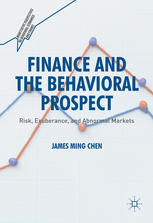

Most ebook files are in PDF format, so you can easily read them using various software such as Foxit Reader or directly on the Google Chrome browser.
Some ebook files are released by publishers in other formats such as .awz, .mobi, .epub, .fb2, etc. You may need to install specific software to read these formats on mobile/PC, such as Calibre.
Please read the tutorial at this link. https://ebooknice.com/page/post?id=faq
We offer FREE conversion to the popular formats you request; however, this may take some time. Therefore, right after payment, please email us, and we will try to provide the service as quickly as possible.
For some exceptional file formats or broken links (if any), please refrain from opening any disputes. Instead, email us first, and we will try to assist within a maximum of 6 hours.
EbookNice Team

Status:
Available0.0
0 reviewsThis book explains how investor behavior, from mental accounting to the combustible interplay of hope and fear, affects financial economics. The transformation of portfolio theory begins with the identification of anomalies. Gaps in perception and behavioral departures from rationality spur momentum, irrational exuberance, and speculative bubbles. Behavioral accounting undermines the rational premises of mathematical finance. Assets and portfolios are imbued with “affect.” Positive and negative emotions warp investment decisions. Whether hedging against intertemporal changes in their ability to bear risk or climbing a psychological hierarchy of needs, investors arrange their portfolios and financial affairs according to emotions and perceptions. Risk aversion and life-cycle theories of consumption provide possible solutions to the equity premium puzzle, an iconic financial mystery. Prospect theory has questioned the cogency of the efficient capital markets hypothesis. Behavioral portfolio theory arises from a psychological account of security, potential, and aspiration.